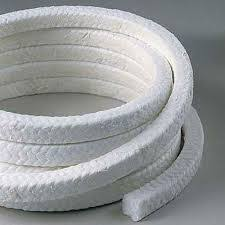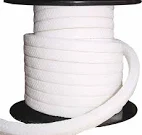Choosing the appropriate PTFE packing for a specific application is critical to ensuring optimal performance, longevity, and safety of the equipment. Several factors must be considered to match the packing type to the operational demands of the environment. This section will guide you through the key considerations when selecting PTFE packing.
When selecting PTFE packing, it is essential to evaluate the following factors:
1. Temperature Range:
PTFE packing must be able to withstand the operating temperatures of the application. Consider both the normal operating temperature and any potential extremes the packing may encounter.


2. Chemical Exposure:
The type and concentration of chemicals in contact with the packing should be evaluated to ensure chemical compatibility. PTFE is resistant to most chemicals, but certain aggressive substances may require specialized PTFE packing, such as PTFE graphite packing.
3. Pressure Conditions:
Determine the pressure conditions within the equipment, including both static and dynamic pressures. High-pressure applications may benefit from reinforced PTFE packing, such as PTFE aramid packing, to provide additional strength and durability.
4. Mechanical Stress:
Consider the mechanical forces the packing will be subjected to, such as in dynamic applications where there is movement or vibration. PTFE braided packing or PTFE chevron packing may be more suitable for applications where mechanical stress is a concern.
5. Environmental Factors:
Assess the environmental conditions, including exposure to moisture, UV light, and abrasive materials. For example, PTFE fiber packing is often selected for its ability to handle abrasive media.


